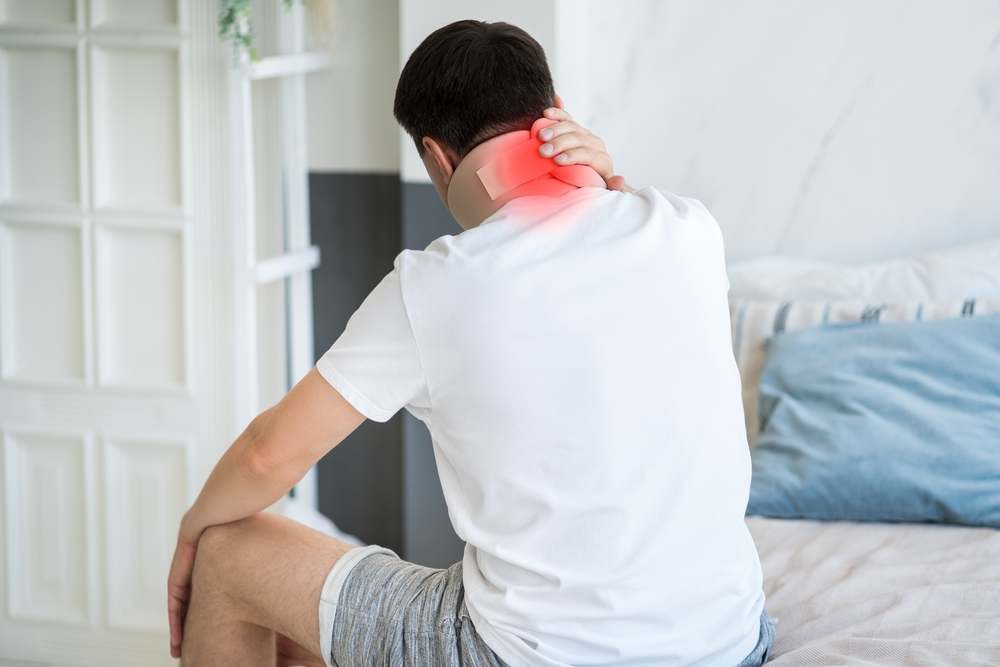 You may think of your childhood when hearing about a bike accident, but the truth is bicycle accidents are very common and often result in injuries. According to the CDC, there are over 130,000 accidents resulting in biking injuries every year. Of these accidents, nearly 1000 people die as a result of their injuries. At AICA Orthopedics, if you have been in a bicycle accident, we are here to work with you in developing a comprehensive treatment plan for any injuries you may have sustained. Our offices in Jonesboro have state-of-the-art diagnostic equipment and physicians ready to treat any biking injury and get you back on your feet.
You may think of your childhood when hearing about a bike accident, but the truth is bicycle accidents are very common and often result in injuries. According to the CDC, there are over 130,000 accidents resulting in biking injuries every year. Of these accidents, nearly 1000 people die as a result of their injuries. At AICA Orthopedics, if you have been in a bicycle accident, we are here to work with you in developing a comprehensive treatment plan for any injuries you may have sustained. Our offices in Jonesboro have state-of-the-art diagnostic equipment and physicians ready to treat any biking injury and get you back on your feet.
Are bike accidents really that dangerous?
Because bicycles are non motorized, you might think that they can’t result in severe injuries unlike car accident injuries. However, this is not correct; in fact, bicycle accidents can be very dangerous, especially when you are not taking appropriate safety measures.
What can cause a biking accident and injuries?
Over half of bicycle accidents occur in urban areas, usually involving motor vehicles. This can happen if a driver does not see a cyclist due to inattention or inappropriate bike lanes. While you might associate biking injuries with children, the highest death rate as a result of a bike accident is in adults over 55 years old.
Not wearing appropriate protective gear will increase your chance of injury following a biking accident. You should always wear a helmet when biking to prevent head injuries. Make sure you are wearing bright visible clothing and utilize bike lanes where possible. Always pay attention to your surroundings as well.
Top 8 Injuries in a Bicycle Accident
Neck Injuries
 There are two types of neck injuries cyclists are susceptible to. The first is traumatic neck pain, which can be a strain, damage to the spinal discs, or pinched nerves. These are often the result of a high-speed impact or the cyclist being thrown.
There are two types of neck injuries cyclists are susceptible to. The first is traumatic neck pain, which can be a strain, damage to the spinal discs, or pinched nerves. These are often the result of a high-speed impact or the cyclist being thrown.
The second type of neck injury is an overuse injury. If you are using poor posture while biking, you can put undue pressure on the muscles in your neck and upper back, resulting in pain, tension, and discomfort.
Fractures and Dislocations
The most common fracture a cyclist can suffer is a broken clavicle. You are most likely to suffer a fracture or dislocation as a result of an impact. The most common fractures after your clavicle occur in the extremities. When you suffer a fall from a bike or are hit by another moving vehicle or a stationary object, the instinct most people have is to catch their fall with their hands. This can result in wrist and arm fractures.
Contusions and Lacerations
Most bicycle-related injuries involve “road rash,” superficial abrasions to the skin as a result of dragging across pavement or concrete. If a cyclist is thrown from their bike or hit by another moving vehicle, they can also suffer bruises or cuts.
TBI or Traumatic Brain Injuries
One of the most severe consequences of a bicycle accident can occur when you do not wear a helmet. A helmet protects your brain from trauma when falling, direct impact, and even being flung from your bicycle.
A traumatic brain injury is any injury to your brain resulting in permanent damage to the brain. These injuries can be mild or severe. A concussion is a type of traumatic brain injury. If you hit your head, seeking evaluation from a physician experienced in treating accident injuries, like AICA Orthopedics, is vital to diagnosis and recovery.
Nerve Damage or Paralysis
Nerve damage or even paralysis can happen when you are in a bike accident. If you are hit by a car, fall off your bike, or hit something else, you are at risk for trauma. Nerve damage can occur if you dislocate an arm or leg, fracture a bone, or lacerate nerves. Damage to your spinal column can also cause nerve damage and even result in paralysis.
Nerve damage can affect many different parts and functions of the body. Nerve damage can result in pins and needles feeling in your extremities and difficulty walking or performing fine motor tasks.
Hot Foot
Hot foot occurs when an inadequate amount of blood reaches the ball of the foot, resulting in a burning, painful sensation. The pressure on the nerves running through the ball of the foot is compressed in snug shoes, and you put almost all of your weight on the ball of the foot when pedaling.
Knee Pain
Your knee is one of the most used joints in the human body and the main joint utilized when cycling. Knee pain can originate from an impact or can be chronic. Typically knee pain that results from cycling is because your bike is not the right height, causing too much strain on the knee. Patellofemoral Syndrome, also known as Cyclist’s KNee, is one of the most common overuse injuries seen in regular cyclists.
- Posterior Knee Pain – Usually a result of overstretching the hamstring, a common cause of this is the saddle of your bike being too high.
- Anterior Knee Pain – Conversely, anterior knee pain often results from the saddle being too low and putting too much pressure on your kneecap, or patella.
- Medial and Lateral Knee Pain – There are a couple of causes for this type of knee pain, including improper shoes or the twisting of the knee that can occur during a fall from your bike.
Back Pain
As with main routine exercising, overuse injuries are common when not using the proper posture, form, and even equipment. Riders may experience soreness and stiffness in the back and neck after cycling in one position for as little as an hour.
The best way to prevent this is to identify what is causing the back pain. A common antagonist for back pain in cyclists is the saddle of the bike being too high or low. Your back should be in a straight slope and not rounded or arched.
When should I seek medical attention after an accident?
Seeking medical attention right away is important following any traumatic accident. If you are experiencing bleeding, pain that does not resolve, pain that interferes with your daily life, loss of sensation, or increased weakness, these are some key factors that indicate you should seek medical treatment immediately.
Some chronic use injuries or mild injuries can be treated at home, but if they do not resolve or worsen, call AICA Orthopedics to schedule an appointment with one of our doctors today!
Diagnostics Available
If you are suffering chronic pain or an acute injury as the result of cycling, your Jonesboro AICA Orthopedic physicians have state-of-the-art diagnostics available and a top-rated team of doctors and staff to assess your injuries.
X-Rays
These are designed to capture the image of calcified structures, like bones and teeth. These images are used to identify fractures, breaks, and foreign bodies suffered during a bicycle accident.
MRI
An MRI, or magnetic resonance imaging, is used to assess internal injuries. MRIs are used to evaluate torn ligaments and spinal cord injuries as well as soft tissues, nerves, and blood vessels.
CT Scan
A CT Scan, or computed tomography, is a cross between an MRI and an X-ray. It produces high-resolution images, usually used to show details of soft tissue injuries. CT scans are often the first type of scan done following traumatic injuries due to their speed and level of detail.
Ultrasound
Your doctor can perform an ultrasound that can be used to show any bleeding in joints as well as damage to soft tissue.
Treatments
Once you come in to see our expert doctors at AICA Orthopedics at Jonesboro, our team will perform a thorough exam and any appropriate diagnostic testing and then work with you to develop the best recovery plan for you.
The course of treatment will depend on a final diagnosis, and your team will recommend the most comprehensive and the best plan for you. Your injuries may be treated with non-surgical or potentially surgical treatments.
Some non-surgical treatments may include:
- Over-the-counter medications such as anti-inflammatories or pain relievers
- Muscle relaxers may be used for muscle spasms
- Ice or heat
- Rest
- Casts for broken bones
- Chiropractic adjustments (in-house at AICA Orthopedics) to help relieve pain
- More severe injuries may require surgery to repair damage
Contact AICA Jonesboro Today
If you have been in a bike accident and are experiencing any of the symptoms above, especially bleeding, dizziness, persistent pain, weakness, or loss of consciousness, it is imperative you seek medical attention as soon as possible. Early diagnosis and treatments produce the best outcome following an injury.
At AICA Jonesboro, we treat accident injuries every day, so our doctors are highly experienced in treating these injuries and can get you on the path to feeling better. Our comprehensive approach to recovery involves diagnostics, initial treatment, and working closely with our physical therapists and chiropractors for long-term recovery and rehabilitation if your injury requires it. Contact AICA Orthopedics today to get you on the path to a pain-free life.
